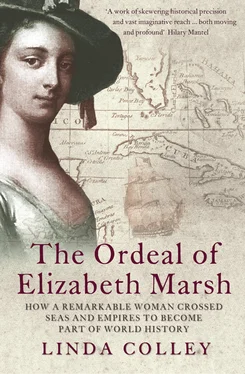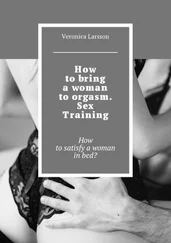1 ...6 7 8 10 11 12 ...22 Milbourne Marsh experienced some of the consequences of growing panic among Jamaica’s whites at first hand. Several of his former shipmates on the Kingston and the Deal Castle were swept into fighting the maroons on shore, and on 10 October 1734 John Cudjoe was taken off the Rupert at his owner’s request. Slave escapes had reached such levels by now that Cudjoe’s owner may have wanted him under her surveillance, or she may simply have been desperate for his labour. The fact that Milbourne’s former servant shared his Akan surname, which means ‘male born on Monday’, with one of the most prominent maroon chieftains, Cudjoe, who would force the British to a treaty in 1739, may also have provoked superstitious unease and hostility aboard the Rupert itself. 40 During this same month, October 1734, martial law was declared on Jamaica. Six hundred additional men were raised from its parishes to serve as militia, and London shipped out six new military companies to aid them. By now, Milbourne was closely involved with Elizabeth Evans. Their marriage that December, the certainty by February 1735 that a child was on the way, and mounting fears among Jamaica’s whites that ‘We cannot say we are sure of a other day,’ made them determined to get out. 41
Milbourne Marsh acted with his customary efficiency. On 7 March the Kingston arrived at Port Royal and began lengthy preparations for its voyage back to England. By 10 March, Milbourne had signed on again with his old ship, where he retained friends and patrons. He seems to have sold, or given over his rights in, the drink shop at Port Royal and the wherry to a naval official there. It is possible, though not proven, that he sold the slaves, Palla, Cresia, Silvia, Gosport and the rest, to the Royal Navy, which employed both male and female slaves in its Jamaican dockyards. This indeed may have been how he funded his new wife’s passage to England. 42 Certainly, her escape from the island was aided by Milbourne’s own specialized skills. On paper, Royal Navy warships were exclusively masculine spaces, but women who posed no obvious sexual temptation were sometimes permitted to sail on them, especially if their responsible male possessed leverage of some kind. When the Kingston left Jamaica that June, Elizabeth Marsh senior was six months pregnant, and she was the wife of one of the ship’s most indispensable craftsmen. Twice married to a mariner, she also understood what was expected of her. She seems to have made private arrangements for her food with the Kingston’s purser so as to keep clear of the ship’s formal accounting system, and she would probably have spent the days of the voyage resting her growing bulk on the orlop deck, the quietest, darkest and most secluded space aboard. 43 It was on 20 August 1735 that they sailed into Portsmouth harbour, barely a month before the birth of their daughter.
Such time as this new Elizabeth Marsh spent on dry land during her first nineteen years was mainly lived here, at Portsmouth. The family found lodgings in the New Buildings, a recent development of austere workingmen’s houses in what was then the northern end of Portsea Island. It was only a short walk from here to St Thomas, the medieval church on Portsmouth’s High Street where Elizabeth Marsh was christened on 3 October 1735. 44
The New Buildings gave Milbourne Marsh easy access to his work. The development had been constructed with public money just outside the walls of Portsmouth’s naval dockyard, so that shipwrights and other workers could arrive punctually for their thirteen-hour day. Although he worked sometimes in the dockyard, and sometimes at sea, Milbourne organized his life so as to spend as much time as possible with his family. He deployed his customary tactic of using his specialized skills to lever himself into a new job whenever the current one became inconvenient. In September 1735, the month he became a father, he abandoned the Kingston and, armed with a recommendation from Admiral Sir Chaloner Ogle, moved back as a ship’s carpenter on the Deal Castle . The latter was classed only as a sixth-rate warship, and therefore unlikely to be sent into the thick of battle in the event of war. Small vessels like this could still however be dispatched on missions in foreign waters; and when the Deal Castle was ordered to South Carolina in 1739, Milbourne jumped ship again. He took himself off to the Cambridge , an eighty-gun warship undergoing conveniently lengthy repairs in Portsmouth harbour. 45
Partly as a result of her father’s ingenuity, these early years in Portsmouth were the most stable of Elizabeth Marsh’s life. Yet, for all that this was a far more secure and healthy environment, Portsmouth shared certain important characteristics with Jamaica. It was vitally involved in empire and organized violence; it was a place of pioneering industrialization; and it was markedly cosmopolitan, and caught up in intercontinental trade and migration. Not for nothing was Portsmouth sometimes described – and sometimes condemned – as England’s equivalent to Port Royal before the earthquake: ‘If that was Sodom, this is Gomorrah.’ 46
At first sight, the town appeared an ancient, walled place of some six hundred houses, occupying part of the island of Portsea, and linked to the mainland by a system of gates and bridges. But the gates and bridges were closely guarded, because Portsmouth was Britain’s premier military town, and the Royal Navy’s main operational base and dockyard. There were six naval dockyards in England at this time, all of them situated along its southern coast. On the Thames there were Deptford and Woolwich, both small dockyards. At the mouth of the Medway in Kent there was Sheerness, and twelve miles up the river the much bigger yard of Chatham. Then there were the so-called western dockyards, Plymouth and Portsmouth. By the 1730s, the latter had overtaken Chatham as the most important. 47 Hidden behind high walls, inconspicuous to casual travellers arriving by road, Portsmouth looked utterly different when approached from the sea:
A spacious harbour, and the great ships lying at their moorings for three or four miles up, and the harbour for a mile at least on each side covered with buildings and thronged with people; the water covered with boats passing and repassing like as on the Thames … The prospect from the middle of the harbour gives you the idea of a great city. 48
The dockyard’s specialized warehouses and rope-, mast- and rigging-houses were some of the biggest, most expensive constructions of the time dedicated to secular purposes. Almost 2200 skilled workmen were employed here in 1735, who were divided into twenty-three different categories, and tolled into work at morning and out at night by bells. A further 259 men were attached to the dockyard’s ropeyard. In what was still a primarily agricultural economy, this represented an extraordinary concentration of labour. Even a hundred years after this, it was still rare for industrial establishments anywhere in the world to employ more than five hundred men. 49
Surrounded by sea, but always short of fresh water, wreathed in coal smoke from the dockyard’s many forges, and full of the noise of metal on wood, Portsmouth, then, was a prime site of state power and imperial projection. But, as indicated by the pair of seven-foot-high dragon-headed pagodas from China erected by its dockyard in the 1740s, and by the mixture of coins and languages in use in its streets, the town was also a magnet for outsiders and alien influences. Portsmouth was where most foreign diplomats made landfall in Britain before taking the London road to present their credentials at court. It was the main British depot outside of London of the East India Company. Ships from Calcutta, Madras, Bombay and Canton unloaded textiles, spices and ceramics in Portsmouth, as well as passengers and occasional Asian seamen. This was also a garrison town, and companies of soldiers marched through it en route for, or returning from, overseas expeditions; and Portsmouth was a commercial port as well as a naval base. There were Arab traders arriving from the Levant, seamen and fish-dealers from Hudson’s Bay and New England, Baltic suppliers catering to the Royal Navy’s ceaseless appetite for timber, so-called ‘Port Jews’ eschewing the distinctive life of their people in order to trade and lend money, and smugglers from nowhere in particular. 50
Читать дальше












